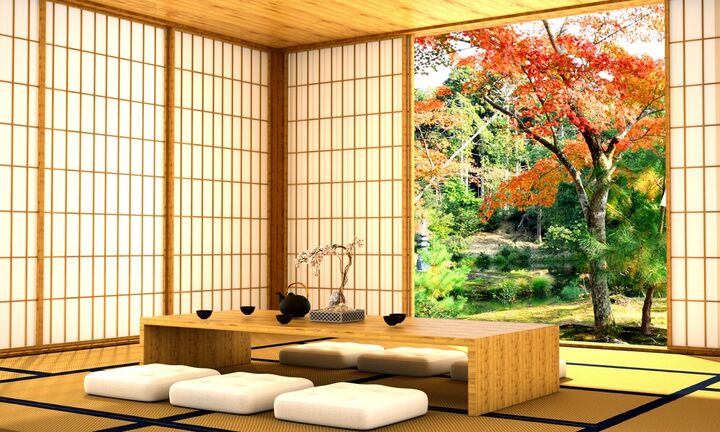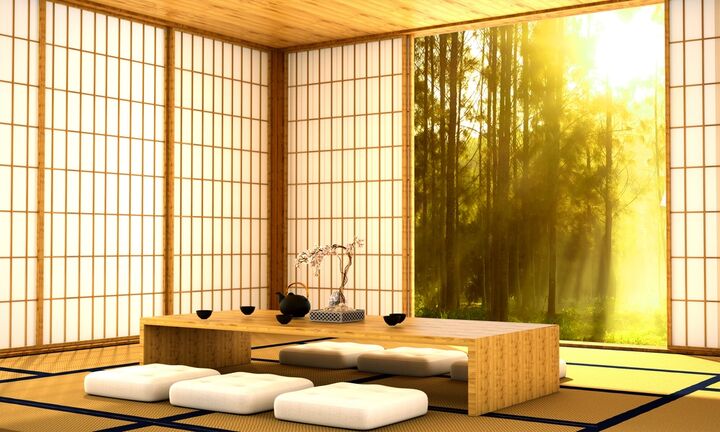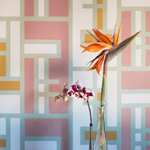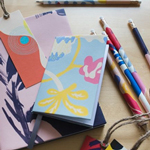
The principles of Japanese interior design
Japanese interior style cannot be defined easily. It is something that needs to be experienced. The style encompasses both traditional and modern Japanese interior designs. There are several principles that are common among houses that is inspired by the Japanese interior style:
1. Flexibility – Japanese interior style is efficient in the use of resources as popular in the Japanese culture. The rooms are multifunctional and maximize the utilization of space.
2. Privacy – traditional Japanese interiors make use of paper screens, called as shoji. This allow light in to the room while offering privacy.
3. Natural materials – the interior style make use of natural materials such as fine woods, bamboo, silk, rice straw mats and paper.
4. Simplicity – the Japanese values simplicity and the space in a room is important as the design elements. The rooms should have clutter less appearance and be decorated sparingly.
5. Subdued colors – the design style make use of natural colors inspired by natural materials
6. Diffused light – the design style uses diffused lighting that make use of natural sources of light that reach the interior through shoji screens.

Japanese interior theme for the living room
Japanese interior design in the living room always look restrained and noble. It is a combination of aesthetics and high practicality and also the feeling of closeness to nature. It is characterized by simplicity, conciseness, clear lines and open spaces. The living room is basically made of natural materials such as bamboo, rattan, wood or stone due to their natural texture. The walls are made of wood panels, rice paper, straw or natural cork. These materials appear great and has the ability to hide rough surfaces. The ceiling is basically covered by plasterboard and stretched canvas. The floor is covered with mat bamboo board or laminate so that tatami mats can be laid.
The walls of the living room is painted with calm and neutral colors as these are common in Japanese inspired homes. The common colors are white, cream, and beige. Natural shades of light wood, rice paper, brown and green bamboo are also commonly seen in the living room. The colors are contrasted with dark walnut, ash-tree or tree parts. Bring the nature in by further decorating the walls with a nature wall mural which will look natural in a Japanese-inspired home.
Furniture pieces have minimum height and painted in black and have smooth varnished surfaces. Decorative items are kept to the minimum or none at all. The conventional curtains and blinds are made of bamboo and straw or roller blinds decorated with Japanese paintings. The lighting in the living room can also act as lamps with lampshades made of silk or rice paper.
Relax and calm your mind with Japanese interior in the bedroom
Japanese interior design focuses on “less is more” and thus allows one to transform the bedroom into an elegant retreat. The floor of the bedroom is basically covered with tatami mats as this is the traditional material used in Japanese homes to cover the floor.
The color of the bedroom is traditionally featured with natural earthy tones such as cream, brown, beige and black. The common accents used are orange, blue, green and red and these colors are incorporated through paintings, linens and decorative accessories.
Furniture pieces are close to the floor and thus evoke a centered feel. The bed is low and the futon mattress can also be laid directly to the floor.
Minimalist Japanese interior design for your man cave
A minimalist Japanese interior design is not only about looking good. It is also about making your life calmer, less stressful and more liberating. Clutter is not acceptable in the man cave as these are only distractions and can cause stress and restlessness. Therefore, the fewer things there are, the more focused you will be.
Essential furniture pieces only are added in the man cave. Think about the things you really need and incorporate them in the room. Therefore, the essential furniture pieces are couch, coffee table, lamp and simple entertainment system.
Modern Japanese interior in your home
Modern Japanese interior focuses on minimalist, clean, uncluttered living, balance, culture and nature. The addition of Japanese plants, such as bonsai and bamboo will provide the traditional Japanese appearance.
The sound of water provides a calming effect, therefore the addition of tub or pond will give the Zen effect in the house. The furniture pieces are typically low and should be modern, clean-lined and made of natural wood. The lighting is angular and modern and with the emphasis of natural lighting. Everything should have a purpose and place.




